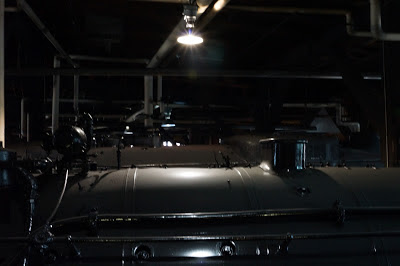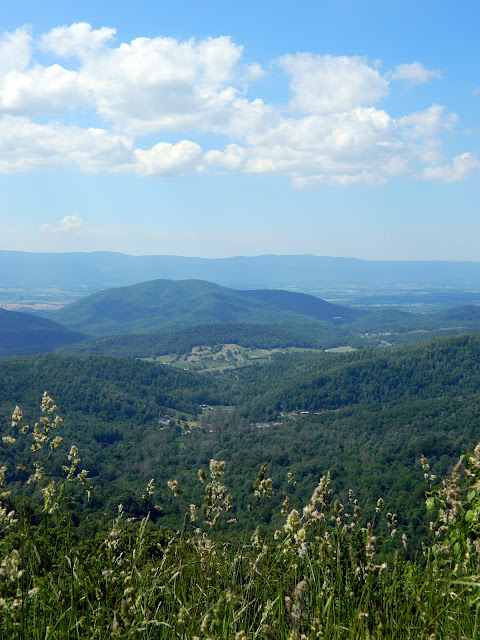Now we're in Lincoln, NH for three weeks. This stop is different from all others, as we are not in the RV! The RV is parked in our friends' yard back in Massachusetts while we are staying in a condo provided by Pratt Institute, for whom I am teaching a course. (Pratt however is in Brooklyn - this is just a summer intensive program.) Also, Kona isn't with us either. She's in Vermont with some other friends, who have 7 or 8 other retrievers. So she's in doggie summer camp. To top it all off, Rick is traveling to visit a couple of other friends in Maine. So despite being planted here for three weeks, we also seem to be spread all over the place.
After getting settled into the condo in Lincoln, Rick and I took a short trip north on Route 3 to Franconia Notch State Park. The park is a long narrow strip of land along I-93/State 3 with inroads and trails west and east into the surrounding hills and mountains. The point furthest south, and closest for us, is the Flume Gorge.
Upon entering the parking area, there are signs directing you to the Visitors' Center, through which you proceed to the Flume. There is a $15 admission fee to enter the Flume Gorge area, which includes a short bus ride to and from the base of the Gorge Trail, if you so desire. This is a state park, so there was no discount with our Senior Pass. The trail you bypass by taking the bus ride is not a hard one, but we were happy to take the bus back to the Boulder Cabin where the bus stops after we hiked the Gorge.
Of course New England is famous for its covered bridges, and there is a classic one here in the park, over the Flume Brook that forms the Flume Gorge.
At the base of the Gorge is Table Rock where the river widens across a flattened shelf of granite. You'll see these kinds of formations throughout New Hampshire, and many are open to exploring, wading and sliding, like Franconia Falls on the other side of Lincoln. Visitors are not encouraged to walk on Table Rock however, for safety reasons.
As you walk up the river, the Gorge begins to narrow and the moss covered granite walls begin to rise. The light just barely dappled the walls and roots of this tree.
Visitors walk through the Gorge on a wooden boardwalk mounted to the walls. At times the water is rushing right under your feet.
The Gorge was created by the erosion of a basalt dike, which was formed by molten lava being forced through large cracks in the granite. Below is a picture of a remnant of the black rock of the dike running parallel to the Gorge. The lighter colored area in the lower right is the clear water running over lighter colored granite.
The Gorge is almost always cool and misty, even when its hot and sunny outside.
It was a perfect place for the muggy day we were having.
The walls are lush with mosses, ferns and other vegetation. Readers from the Pacific Northwest would feel right at home here. We could just see this lighted patch of mosses and ferns way up at the top of the rock walls.
At the top end of the Gorge is Avalanche Falls, entering at a 90 degree angle.
Just beyond the falls is Bear Cave.
We took the Rim Path back to the base, and this time we passed on exploring the Ridge Path to Liberty Gorge, Sentinel Pool and the Wolf Den. On the way back I caught sight of this little clump of bunchberries hiding behind a tree. We also saw these in the northwestern US.
There is much more to see of the Flume Gorge area and the rest of Franconia State Park, but we had to hurry back to the condo to meet up with our friend Laura, who will be teaching with me for the next couple of weeks. More about the adventures that I'm sure Laura and I will have in our next posts.






































































